Key takeaways
Decoding RFI, RFP, and RFQ: A Comparative Guide
When it comes to vendor selection, companies use three key request documents to gather information, evaluate proposals, and quantify costs: RFI, RFQ, and RFP. How do you know which one to use and when? Let’s explore each document in more detail.
RFI or request for information
Take it as the initial handshake. An RFI seeks more information about your business and solutions. The purpose? To establish expertise by providing informative answers about your specialty and offering. An RFI is a standardized format you can use to provide all of the answers you choose to share.
RFP or request for proposal
This is very formal. An RFP demands a well-documented and complete proposal to win a specific contract. Your mission? Tell a compelling story about why your solution is the top choice. Style-wise, it’s formal with a little room for branding. Include a content plan based on your win themes.
RFQ or request for quote
Now let’s talk numbers. An RFQ asks for pricing information and product specifications. The goal? Provide the best quote possible without sacrificing profit. Focus on structure and leave some room for negotiations and easy updates.
Whether you’re a seasoned project manager or encountering these documents for the first time in your business, understanding the differences between these project management terms will help you navigate the bidding process effectively and choose the right one at the right time.
RFI vs RFP vs RFQ: At a Glance
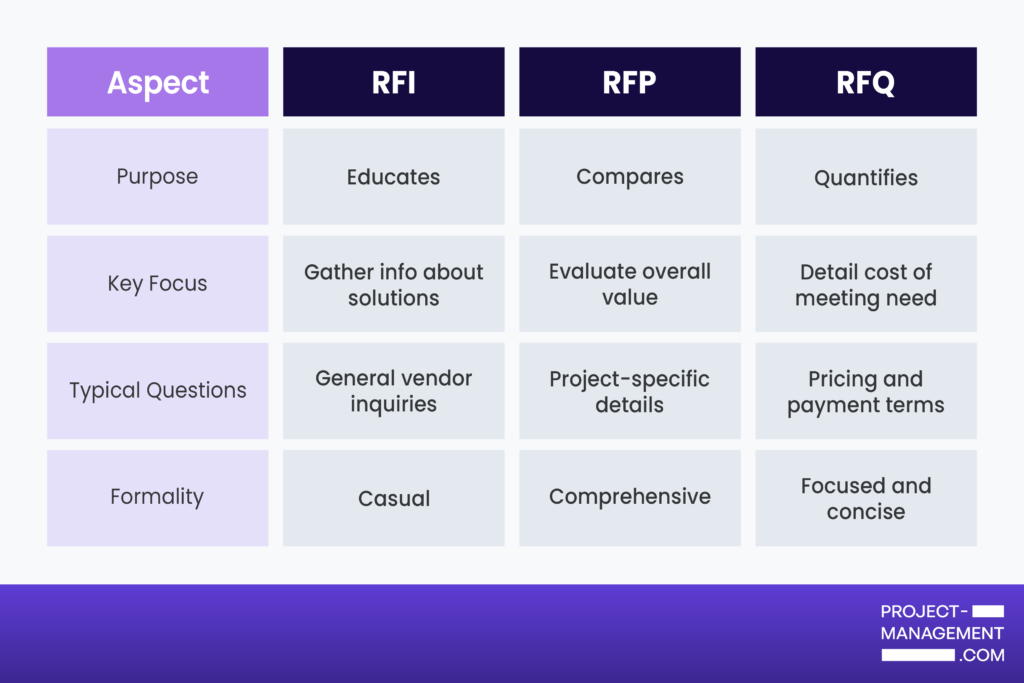
What is an RFI?
An RFI (request for information) is a research-oriented document organizations use to investigate potential business engagements with external vendors. It’s requested at the early stage of bidding, long before any work offer is extended. It provides foundational information—including business background, successes and wins, expertise, and their menu of products and services—enabling organizations to assess how well contractors and service providers meet their business requirements. Essential elements of an RFI include the vendor’s business background, accomplishments, expertise, and the services or products they offer.
RFI use cases and applications
IT
When evaluating software solutions, companies send RFIs to multiple vendors to compare offerings. RFIs serve as data-gathering tools, helping buyers understand setup costs and tech support options from each vendor.
Ad agencies
Businesses send RFIs to ad agencies to assess available services and needs. This helps them understand agency strengths, past successes, notable achievements, service offerings, and campaign capabilities. The RFI collects detailed information about the agencies’ expertise.
Construction
For construction projects, RFIs serve to clarify information gaps, eliminate ambiguities, and capture specific decisions. When errors, conflicts, or omissions arise, relevant parties receive RFIs to seek clarification or provide missing details.
RFI examples and templates
Rather than starting from scratch, find a template and kick off the procurement process right away.
The following websites offer RFI templates you can use:
ClickUp provides top-tier RFI templates for professional communication with suppliers and vendors.
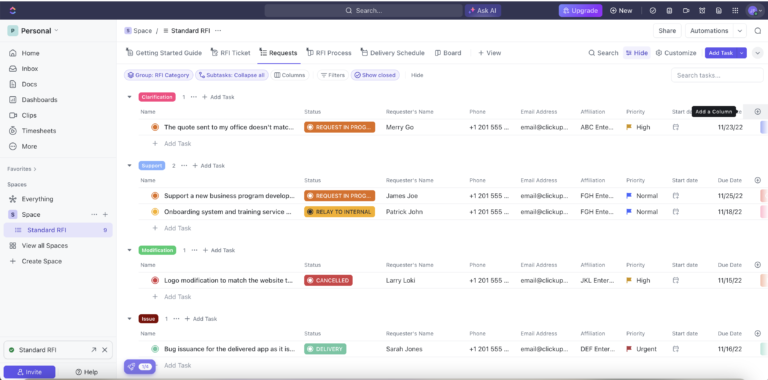
Procore offers free RFI templates specifically designed for construction projects and initiatives.
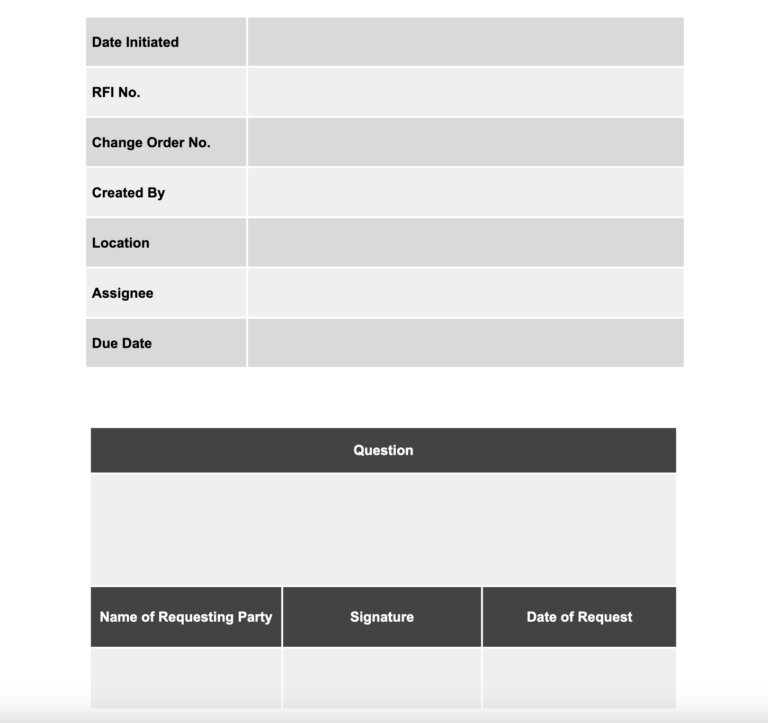
Smartsheet has created free RFI forms and templates available in Excel, Word, and PDF formats.
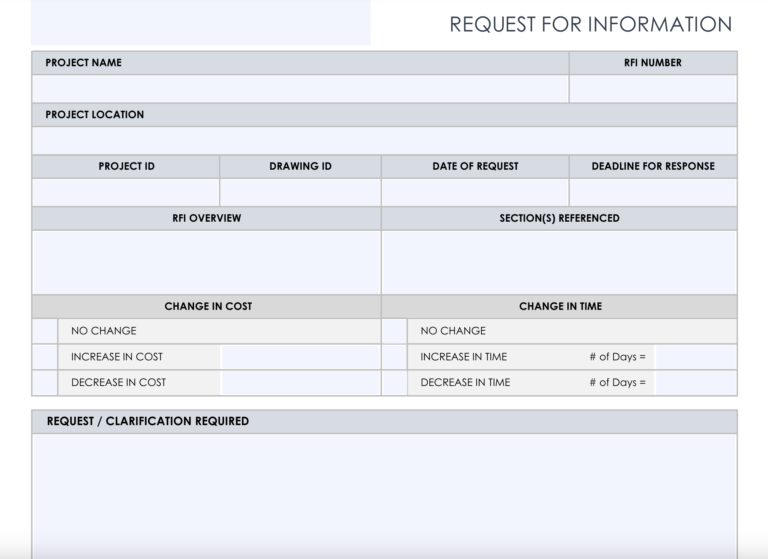
Archdesk provides free RFI templates for almost every construction use case.
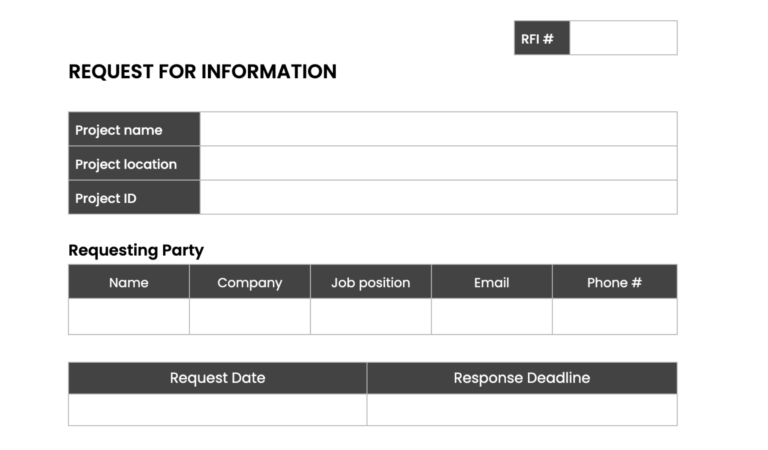
What is an RFP?
An RFP is a highly personalized document tailored to the needs of the inquiring organization. It’s used when comparing vendors to fill specific business needs. Key components include project details, company introduction, projected outcomes, costs, and timelines.
RFP use cases and applications
IT solution procurement
- When a company requires a new customer relationship management (CRM) system, they initiate an RFP process.
- Select vendors are invited to submit proposals, which typically include technical specifications, implementation plans, and pricing. The company evaluates these to choose the best-fit solution.
Construction projects
- When a city plans to build a new public library, they issue an RFP to construction firms.
- Select firms submit proposals with architectural designs, cost estimates, and construction timelines to be evaluated for consideration as the winning contractor.
Marketing campaigns
- When a retail brand aims to launch a nationwide advertising campaign, they issue an RFP to marketing agencies.
- Competing agencies submit creative concepts, media plans, and estimated costs for the work. The brand evaluates each in detail to choose the agency that aligns best with their vision.
RFPs help organizations understand and compare vendor offerings, standardize the procurement process, and make informed decisions based on transparency, competitiveness, and value.
RFP examples and templates
To kick off the procurement process, look through the following websites’ library of ready-to-use RFP templates:
Responsive.io lets you choose from a curated list of 33 top RFP examples spanning various industries, from advertising to technology. Each example includes a brief description calling attention to noteworthy features.
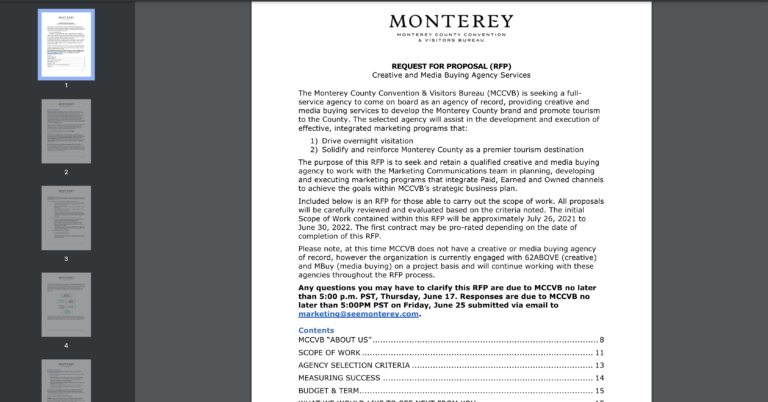
HubSpot offers a practical walkthrough on writing a bid-winning RFP. It includes a real-life example and an RFP template for inspiration, plus practical tips.
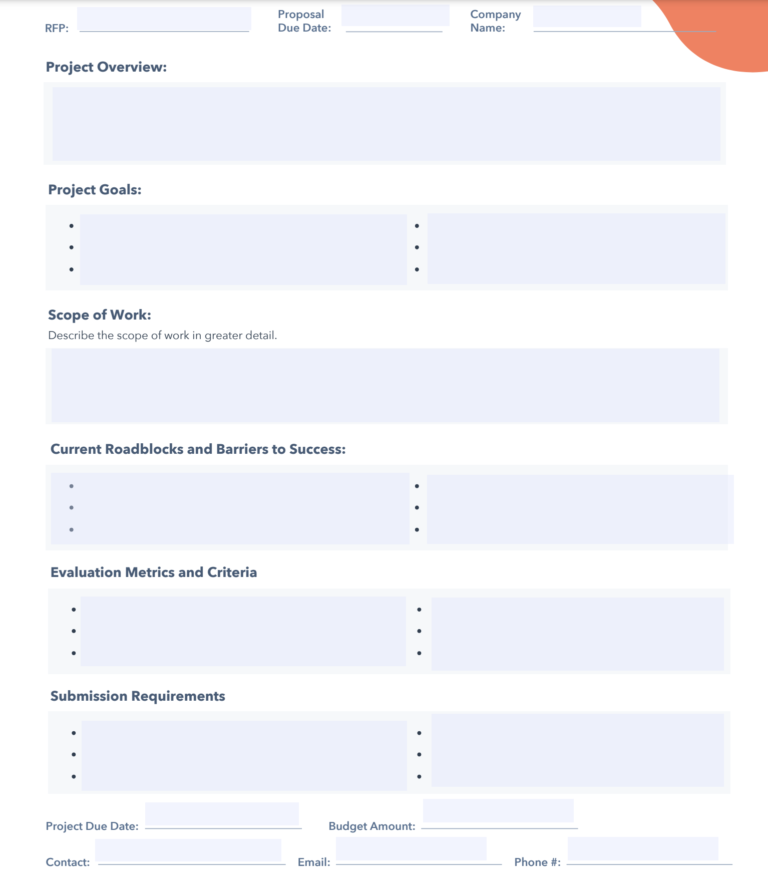
ClickUp has 10 RFP templates for aid in writing effective RFPs for your business.
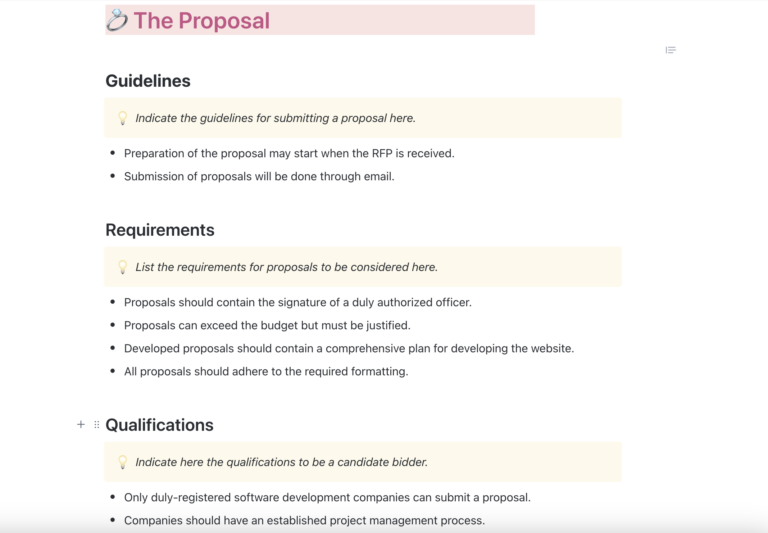
What is an RFQ?
An RFQ is commonly used when companies want to purchase specific goods or services and compare costs from multiple suppliers. It is straightforward and focuses solely on pricing. Key components include a point of contact, pricing details, and an outline of offered products or services.
RFQ use cases and applications
IT solution procurement
- When a company requires a new CRM system, they issue an RFQ to software vendors for a quote.
- Vendors submit proposals, including technical specifications, implementation plans, and pricing to be evaluated as the best-fit solution.
Construction projects
- When a city plans to build a new public library, they issue an RFQ to construction firms.
- Bidding firms submit proposals with architectural designs, cost estimates, and construction timelines for consideration as contractors.
Marketing campaigns
- When a retail brand plans a nationwide advertising campaign, they issue an RFQ to marketing agencies.
- Interested agencies submit creative concepts, media plans, and estimated costs that they believe align best with the brand’s vision.
RFQ examples and templates
To begin the intricate RFQ process, check out these ready-to-use templates:
ProjectManager offers a treasure trove of RFQ resources and helpful RFQ templates.
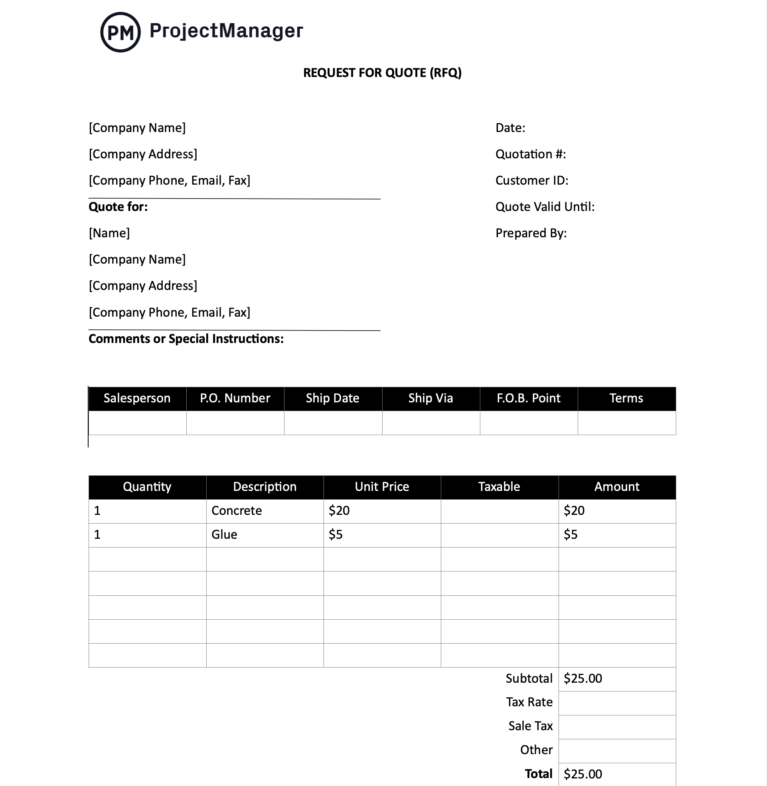
ClickUp has RFQ templates you can use to streamline communication and collaboration with vendors.
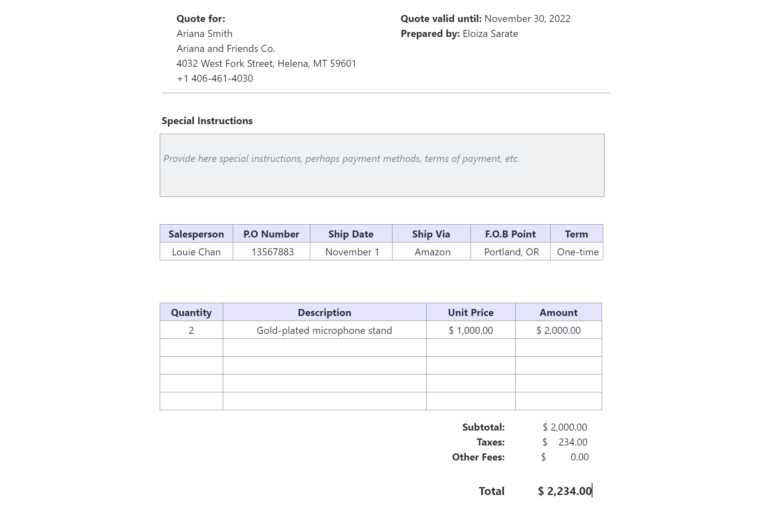
Asana has an RFQ template designed to make finding the right vendor simple.
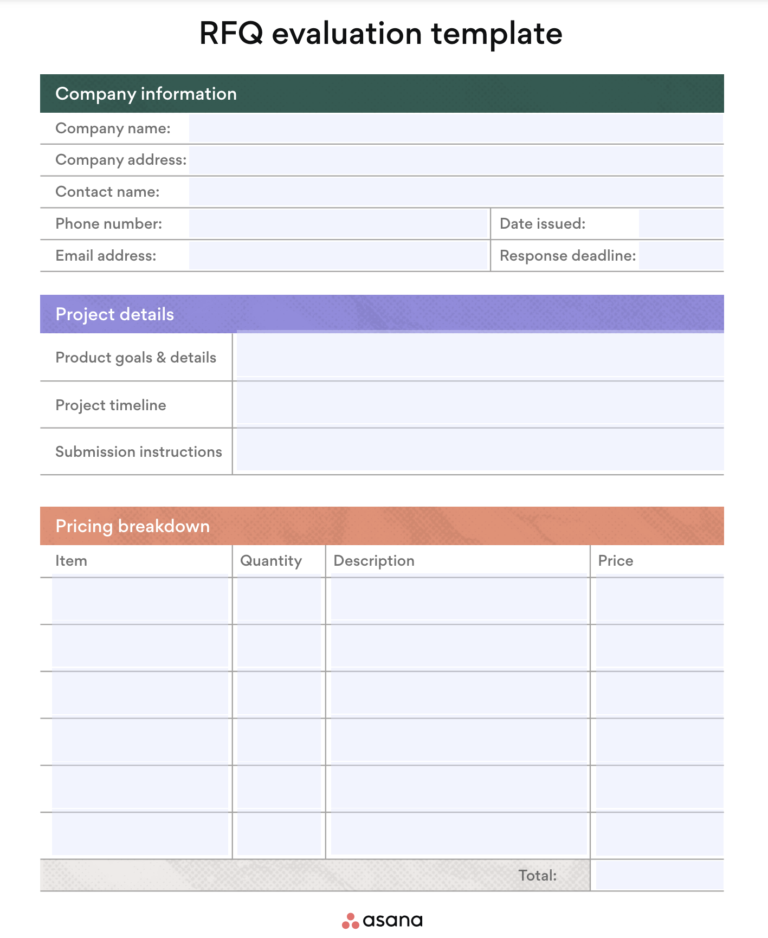
Understanding Request Documentation Differences and Comparisons
Let’s break down the unique differences between RFI, RFP, and RFQ and compare their benefits so you know which document to dive into at certain stages of the procurement process:
Request for information
- Its purpose is to gather information about outside vendors.
- This is used in the early stages of the bidding and tendering process.
- It sets a baseline understanding of how contractors and service providers fit into business needs.
- It includes background information on the business, highlights wins, notes expertise, and offered services/products.
Request for proposal
- This is a detailed document for hiring specific vendors to fill specific business needs and requirements.
- This is used to evaluate individual vendors against each other.
- It includes project details, company overview, outcomes, costs, and timing.
- It focuses on comprehensive solutions and how they are to be achieved.
Request for quote
- This document compares pricing for specific goods or services.
- It is more simple and requires less detail than an RFI or RFP.
- It includes contact, pricing information, and an outline of products and services offered.
- It focuses just on pricing for well-described items and offerings.
Each of these documents supports a different stage in the procurement process, from research (RFI) to pricing comparisons (RFQ), to vendor selections (RFP).
Tips for Writing and Responding to Request Documents
- To write an effective RFI, focus on clarity. Gather essential information into a concise format and tailor your questions to the vendors’ expertise and background.
- Deliver a winning RFP by covering all of the bases. Be thorough with the project details, highlight all needs and outcomes, and provide evaluation criteria, including financial range and any time constraints.
- To craft a bullet-proof RFQ, prioritize pricing information. It is also important to be concise and clearly define the requested products and services included.
FAQs
Bottom Line
As with any tool in project management, mastering the distinctions between RFI vs RFP vs RFQ, specifically the purpose they serve, is highly important. It is a skill that can make the procurement and vendor selection process for your company go smoothly. RFIs lay the groundwork, RFPs dive deep into proposals, and RFQs focus on pricing. Understanding when and how to use each document type will help you make informed decisions, streamline processes, and drive successful outcomes. Whichever part of the procurement process you are involved in, keep these nuances in mind as you make your way from idea and business need to discovering and securing that best-in-class contractor.





